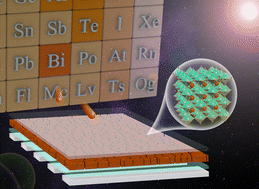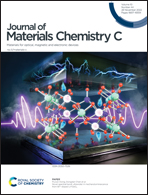Recent progress of lead-free bismuth-based perovskite materials for solar cell applications
Abstract
Organic–inorganic hybrid lead (Pb) perovskites have been recognized as promising light-harvesting materials and attracted tremendous research attention in the photovoltaic field. The power conversion efficiency (PCE) of perovskite solar cells has exceeded 25%. However, the high toxicity and poor environmental stability of Pb-based materials are the main obstacles which limit their reliable applications. Bismuth (Bi)-based analogues have shown high potential in sustainable and renewable energy conversion devices due to their low toxicity and high environmental stability, however, the PCE of Bi-based perovskite solar cells is far lower than their Pb-based counterparts. Despite some early exploration of Bi-based materials, fundamental understanding of the crystallization process and developing strategies to enhance the performance are urgently required. Here, we aim to present a coherent review of the fundamental properties of Bi-based materials and their recent advances in thin-film solar cell applications. We review the various limiting factors of solar cell performance, strategies to enhance device efficiency and stability, and the recent development of charge transport materials and film fabrication techniques, with special emphasis on the regulation of crystallization kinetics and film morphology. Finally, we provide our perspectives on the future development of Bi-based photovoltaic materials.



 Please wait while we load your content...
Please wait while we load your content...